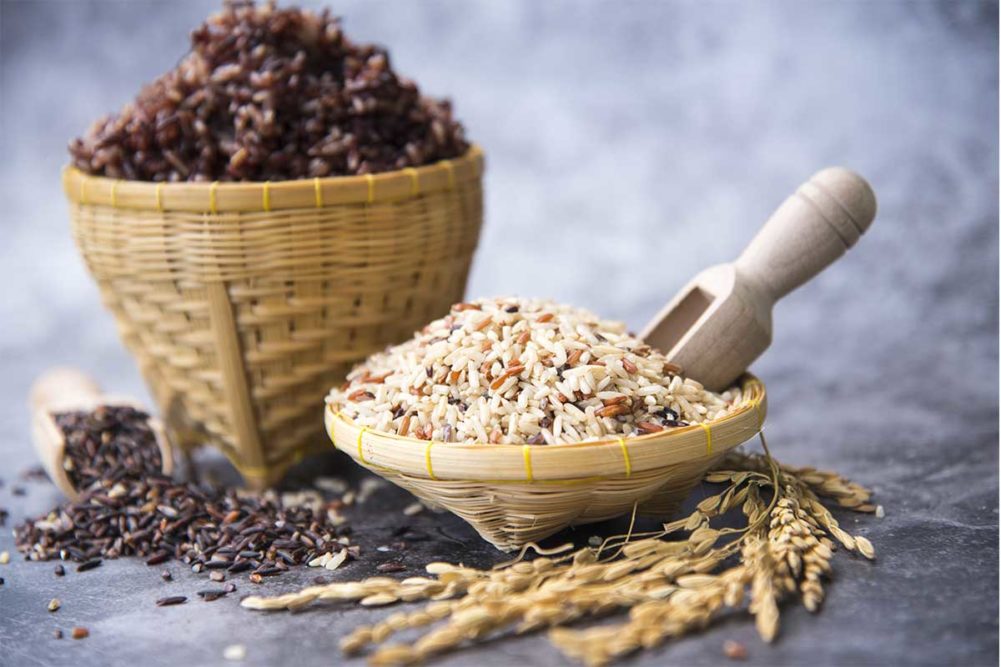KANSAS CITY — At the Institute of Food Technologists (IFT)’s FIRST, a virtual event held July 19-21, Brad Schwan, vice president of segment marketing, ADM North America, pointed out a widely unexplored opportunity for ingredient expansion in the session ‘Coarse grains as functional foods and ingredients.’
“This is an exciting session because it looks at what’s possible when we broaden our aperture and look beyond some of the most common staple grains, like wheat and rice,” Mr. Schwan said. “There is enormous potential in lesser used crops, like sorghum, buckwheat, barley, chia, quinoa, hemp end even dry beans and other pulses. Greater utilization of coarse grains and other less common crops can have a wide range of benefits from human nutrition and public health to sustainability and food security.”
Fereidoon Shahidi, university research professor at Memorial University of Newfoundland in Canada, said the reason coarse grains have gotten a bad rep in the past is because of their historical usage.
“Traditionally, these have been used in animal feed and for brewing purposes,” he said. “They include maize, millet, sorghum, oats, hops, etc. They are generally rich in fiber, vitamins and minerals, as well as antioxidative compounds, which are primarily phenolic in nature.”
His data showed that in comparison to common grains such as rice and wheat, the nutritional composition of coarse grains can have more beneficial aspects, such as higher protein, fiber and some vitamins and minerals. They can also have cancer and cardiovascular disease preventative effects, as well as antioxidant and cholesterol lowering effects. These grains are also associated with lowering the risk of diabetes and with weight loss.
However, he did suggest using the entirety of the grain, as he pointed out that as the grain is pearled, the inner layers hold less phenolic and antioxidant properties than the outer layers.
Keshun Liu, research chemist, US Department of Agriculture, Agricultural Research Service explained the role of food processing and the potential of expanding the use of coarse grains.
“Most food use of coarse grain is rather limited worldwide,” he said. “Currently, the majority of annual production is used for feed, fodders, biofuel and industrial feedstocks. This has been unfortunate. There has been neglect for investment in R&D and commercial activities over the years.”
Because of the versatility of coarse grains, he said, as well as their ability to provide necessary nutrients at a relatively lower cost than common grains, coarse grains can be used to boost local economy development and to maintain food security and sustainability.
Traditional processing methods include soaking, boiling, steaming, dehulling and milling, and fermentation and germination. These are processes, Mr. Liu said, that can be practiced at home and can be industrialized. Modern processes include extrusion and wet milling. Through these methods, coarse grains can be used to create traditional products such as beer, flour or noodles, as well as modern products such as puffed snacks or breakfast cereals for low cost, at a high energy efficiency and no effluent generation.
And the idea of coarse grains is becoming more appealing to consumers today.
“Consumers today are becoming more and more aware of the benefits specific nutrients bring to the table, as well as the foods that contain them,” said Janice Rueda, research and business director, ADM. “The concept of wellness is becoming more and more prevalent in the minds of consumers, and we’re seeing interest in benefits that go beyond traditional measures.”
The increase of anxiety and depression during the coronavirus (COVID-19) pandemic led to a prevalence of the importance of wellbeing on consumers’ dietary interests.
“This is translated into increased consumer demand for products that not only provide nutrition, but also contain functional ingredients like botanical extracts and probiotics that consumers associate with wellness benefits,” Ms. Rueda said.
She pointed out that in this search consumers are finding products they consider to be “real and authentic,” a category which she said is fulfilled by whole food ingredients such as beans and specialty grains, since they are seen as traditional and natural as well as offering new texture and taste experiences. They are also gluten and allergy free.
Coarse grains provide an opportunity to peak consumers’ interest in personal well-being while offering low-cost, efficient ways to make products that could go a long way for communities and the environment. It is an opportunity that bakers may want to explore.





